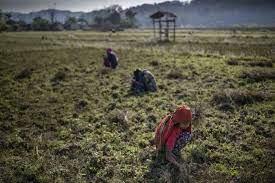
https://www.hrw.org/news/2023/02/01/nepals-social-protection-system-rein...
Nepal’s social protection system fails to effectively protect children from poverty and reinforces inequalities between informal and formal workers.
Governments have an obligation to protect everyone’s rights to social security and an adequate standard of living. A universal approach to social protection, with benefits available to the entire population, fulfills that requirement, can strengthen public support for programs, and help build a strong social contract. Yet, in the past years the government of Nepal has taken steps attempting to target social protection at people in poverty, which can be counterproductive, preventing at-risk households from exercising their right to social security, Human Rights Watch found. Targeted programs are often too narrow; selection processes are costly, inaccurate, and can be prone to corruption; and many eligible people find it hard to apply or don’t apply due to the stigma.
“Nepal has made important strides in expanding social protection, but large groups, particularly children and informal workers, are being left behind,” said Lena Simet, senior economic justice researcher at Human Rights Watch. “Investing in social protection for everyone is crucial to protect people’s rights and to enhance the country’s economic well-being.”
In July 2022, Human Rights Watch examined the state of the social security system in Nepal, discussing policies with ministries involved in planning reforms as well as a municipal social security office implementing the current policies. Human Rights Watch also reviewed household data collected by United Nations Children’s Fund (UNICEF); interviewed 18 people about their experiences requesting or receiving social security; and consulted 16 experts, activists, social workers, and nongovernmental groups that work with people in need of assistance.
The shortcomings became particularly visible during the Covid-19 pandemic. Most people interviewed did not receive any form of social protection or relief during Covid-19-related lockdowns, reducing their ability to meet everyday expenses. The lack of resources led people to cut back on food, remove children from school, omit medical procedures, and take on debt.
A 38-year-old woman who lives with her two children in Chapagaun said, “during Covid, the only meal I could afford for my children [aged 2 and 3 at the time] was wheat mixed with water. I fed them this instead of milk.” A 27-year-old woman who makes and sells handbags for a living said she tried to distract her two children from their hunger. “I sent them outside to play so they would forget about food.”
Social security is a human right enshrined in the Universal Declaration of Human Rights (UDHR) and the International Covenant on Economic, Social, and Cultural Rights. Countries should guarantee protection to everyone, particularly in the event of unemployment, parenting and other caregiving responsibilities, accident, illness, disability, old age, or other life circumstances. The right to social security is also recognized in the Nepali Constitution of 2015.
Yet, children and informal workers are largely invisible to Nepal’s social protection system, Human Rights Watch found. Despite United Nations and academic studies showing the positive effects of unconditional cash transfers to families on child nutrition, child labor, poverty, and future productivity, the government has been slow in expanding income support for children and their families. While 40 percent of Nepal’s population is under age 18, in 2020 children received just 4.1 percent of the social protection budget. In 2022, the Child Grant, Nepal’s main income support program for families, covered only about 40 percent of children under age 5 and just 9.5 percent of all children in the country. Payments are set at NPR 532 (US$4) per month, the lowest of all benefits.
Most social protection is tied to formal employment, though according to Nepal’s latest labor force survey in 2017/18, 84.6 percent of the total working population and 90.5 percent of women workers are engaged in informal work. This system reinforces inequality as workers in the informal sector are more prone to experiencing poverty as earnings are low, employment is unstable, and labor protections, such as the minimum wage, are not enforced. The absence of social protection further exposes them to the harmful effects of emergencies, social and economic shocks, and unpredictable crises like the Covid-19 pandemic, which left many workers unable to earn an income.
In general, the exclusion of informal workers from social protection contravenes international human and labor rights standards and is also likely to undermine economic recovery, Human Rights Watch said. The government should allow informal workers to register with local authorities, offering them access to relief in crises and ensuring their gradual inclusion in the social security system.
Human Rights Watch identified additional barriers that prevent families, informal workers, and other people in Nepal from enjoying their right to social security, contributing to the low social protection coverage rate of just 17 percent.
Eligibility for social protection is tied to citizenship laws, which leave an estimated 6.7 million people – more than a quarter of the population – effectively stateless and ineligible for social security. The high share of people without citizenship certificates results from longstanding discriminatory provisions that make it harder for Nepali women to obtain citizenship certificates for their children than for men, leaving many children of single mothers excluded.
Another barrier is the stigma associated with requesting government support. Many women, especially from Dalit and Muslim communities, report fear of discrimination. Actions by the government contribute to perceptions of stigma, according to officials interviewed by Human Rights Watch, such as publishing the names of people who receive social security or encouraging people to give up social security benefits in exchange for a “certificate of honor.” Targeting social protection more at the poorest households may appear to be the right strategy when financial resources are limited. Yet, it has high administrative costs and is much less effective than universal benefits in reaching the poorest households, so can create further barriers for people to enjoy their right to social security.
Instead of spending scarce government resources on a costly poverty targeting bureaucracy, the government should ensure that everyone can enjoy their rights, including all children and informal workers. Doing so is financially feasible. According to a 2021 UNICEF study, expanding the child grant to all children up to the age of 17 by 2035 would cost less than 0.7 percent of GDP a year. The implications for people’s economic and social rights would be significant. Family poverty could drop by as much as 16.8 percent, enabling families to afford better nutrition, healthcare, and education.
Global contributions, such as from a proposed Global Fund for Social Protection, could help finance the gaps emerging in the start-up period of a new or extended social protection program, and in times of crisis. However, domestic financing is critical for a social protection system's long-term sustainability, and Nepal’s policy of meeting social protection expenditure from domestic revenues is correct. The government should take steps to mobilize domestic resources to progressively attain universal social protection by reforming its tax system. Nepal has a tax-to-GDP ratio below the 20 percent ratio recommended by the UN as a minimum level to meet development goals.
“An inclusive social protection system is key for any rights-respecting economy and underpins building a strong social contract,” Simet said. “Realizing everyone’s right to social security, not just those in formal employment, is vital. This has never been clearer than in the wake of the Covid-19 pandemic, where countries with inclusive social security systems were better equipped to cope with the crisis.”
Methodology
This research builds on a 2021 Human Rights Watch report on the rise in child labor and poverty in Nepal during the Covid-19 pandemic, and the pandemic’s impact on children’s rights in the absence of adequate social protection.
Human Rights Watch interviewed 18 people in Kathmandu, Dhulikhel, and Chapagaun in July 2022. Researchers spoke with families who received the child grant, people who applied unsuccessfully for social security during the Covid-19 pandemic, and people who said they did not apply for benefits due to fear of being stigmatized.
Human Rights Watch also met with three local activists who work on human rights, economic justice, and citizenship rights; four Nepali social protection and sustainable development organizations, including the Child Workers at Nepal Concerned Centre and the National Campaign For Sustainable Development; and the General Federation of Nepali Trade Unions and five international organizations, including the World Bank Group and United Nations agencies.
Human Rights Watch visited a center created by HomeNet Nepal, which provides a safe space for women experiencing economic hardship or domestic violence. Researchers also met with organizations running feeding programs, including the Sikh Gurdwara and Pashupatinath Temple. Saroj Acharya from the Social Protection Civil Society Network provided input and comment on the research.
Human Rights Watch spoke with three federal government offices: the National Planning Commission; Ministry of Labor, Employment, and Social Security; and the Ministry of Land Management, Cooperatives, and Poverty Alleviation, and with the social security office at Dhulikhel municipality.
Poverty and Inequality in Nepal
In 2019, the government and the UN estimated that at least 17.4 percent of the Nepali population lived in multidimensional poverty under an international standard involving a range of factors such as health, education, and standard of living. Women, children, and people with disabilities were most likely to live in poverty. One in three children under age 5 was stunted by malnutrition; the share is 44 percent among children living in poverty. In June 2020, UNICEF estimated that nearly 10 million children lived in poverty, with more facing multidimensional poverty.
A 2019 study by Oxfam International and HAMI, a Nepali nonprofit organization, found income and wealth inequality to be high and growing in Nepal, with discrimination against women, corruption, low-quality public services, and a regressive tax system as key drivers of inequality.
The Covid-19 pandemic, and particularly the lockdown to contain the spread of the virus, caused substantial job and income losses, contributing to increases in poverty. Recovery has been uneven; by the end of 2021, nearly a fifth of jobs lost had yet to be recovered, with workers in agriculture and lower-income occupations recovering more slowly.
In 2021, Human Rights Watch found that the economic impact of the pandemic, together with school closures and insufficient social protection, pushed children into exploitative and dangerous child labor. Many children felt they had no choice but to work to help their families survive. In 2021, the International Labour Organization (ILO) warned that the lack of access to social security and quality public services would not only have life-long negative implications for individuals but could also have irreversible adverse effects on Nepal’s economy.
UN data suggest that economic hardship remained high in 2022. Thirty percent of families that responded to a 2022 UNICEF survey said they needed financial assistance to meet living expenses and 20 percent said they struggle for food daily because of the lack of money and rising prices. Seven percent had reduced food for their children, 8 percent sent their child to work to help make ends meet, 12 percent had sold assets and 27 percent took on debt to pay for food, healthcare, and education.
Several people interviewed said they struggled every day to make ends meet, especially after increases in food and energy prices that contributed to indebtedness. People said they borrowed from relatives, employers, or local loan cooperatives, often at high interest rates. A man from the marginalized Dalit community who lives with his wife, two children, and mother in a tin shack along a main road in Dhulikhel, said: “The only way to do this [survive] is to buy food with credit at shops. You pay it back when you get a little bit of money. We worry.” His current debt with a loan cooperative is about NPR 260,000 ($2,000), at a 24 percent interest rate. He said he had to bribe the loan officer to issue the loan.
A daily laborer who lives with his wife and four adult sons in a shack on public land in the Dhulikhel municipality said life was particularly difficult in the monsoon season, when work availability is unpredictable. He regularly borrows money to make ends meet. His current debt is about NPR 392,000 ($3,000). He hasn’t been able to pay the loan nor interest for more than a year, which will force his family into further debt.
Others said they could not afford to keep their children in school. A 36-year-old farmer, who had just moved from the Terai southern planes to Kathmandu to work as a street cobbler, said his four children in his home village are out of school. “After primary school, it got too expensive.” During the pandemic, he borrowed NPR 50-60,000 ($380-460) from informal money lenders to feed his family and pays NPR 1,500 ($11.50) in interest every month. A 38-year-old woman teared up as she said that her then 12-year-old son had been out of school for two years because she couldn’t afford the fees.
Social Protection
Nepal was one of the early initiators of social protection in South Asia. In 1994, an old age allowance was introduced with a small monthly cash transfer to citizens aged 75 and above. Both coverage and the transfer amount have gradually increased since. Today, a near-universal social pension for older people is a core pillar of Nepal’s social protection system, a widely popular and successful policy.
The 2015 constitution gives social protection a high priority. Article 34 on the right to labor recognizes the right of every worker to contribute to a social security system. Article 43 sets out the right to social security to:
groups deemed to be the indigent citizens, incapacitated and helpless citizens, helpless single women, citizens with disabilities, children, citizens who cannot take care themselves and citizens belonging to the tribes on the verge of extinction shall have the right to social security, in accordance with law.
Special opportunities and benefits in social security, education, health, housing, food, and employment are also to be extended to “indigent citizens and citizens of the communities on the verge of extinction” under article 42 on the right to social justice. The constitution also recognizes a series of other social and economic rights, including the right to education in article 31, the right to health in article 35, the right to food in article 36, and the right to housing in article 37. The government has also committed to achieve 80 percent coverage by 2030.
But implementation of social protection is highly fragmented and managed through several public agencies, which the government and the UN acknowledge is a major problem. The ad hoc nature of programs, poor agency capacity, the mismanagement of funds, and inequity in program design and implementation compound the problem.
In 2018, the government passed a Social Security Act to provide the legal framework for social insurance programs and the application process. But the act failed to specify the nature of documentation required to obtain an identity card, except the need to show birth registration in applying for child grants. Neither does the act spell out the role of provincial and local governments in administering allowances.
In 2022, the government approved an Integrated National Framework on Social Protection to make the social protection system more coordinated and universal. The framework calls on all actors, including the UN and international development agencies, to work closely together to make the system work.
Plans to Increase Poverty Targeting
In 2016, the government took a $150 million World Bank loan to strengthen social protection and develop a “social registry” database to collect household level socioeconomic data and determine poverty using an algorithm based on a proxy means test. The test is part of the government’s “Poor Household Identification Program,” and estimates wealth using more than 40 criteria, including a household’s level of education, floor or roof material, ownership of durable assets, such as a television or refrigerator, and livestock. The criteria are then weighed and ranked to determine whether a household is deemed “poor” or “non-poor.”
Government officials interviewed affirmed that the administration’s focus is on targeting the poorest people for benefits. Research by the ILO and Development Pathways suggests that targeting methods like the proxy means test are highly inaccurate and fall short in identifying beneficiaries, partly because the data quickly become outdated, and because of rigid or exclusionary eligibility criteria. This leads to high exclusion rates and a lack of trust by people who are left out. The attempt to build a social registry, launched in 2016, is not yet complete, although much data already gathered will be out of date.
A previous attempt to target the poorest people in Nepal also failed. In 2012, the government introduced a poverty-targeted program to identify households with very low incomes and provide them with identity cards offering benefits, including discounts on education, health facilities, transport, and food. In 2019, cards had been distributed to only 10 percent of eligible households.
Human Rights Watch reviewed the 2022 list of poor households in Dhulikhel Municipality, which the local government produced based on the 2020 Poor Household Identification Survey. According to the list, only 4.36 percent of Dhulikhel’s population is considered “poor,” a fraction of the people estimated to live in multidimensional poverty before the pandemic.
Excluding people from benefits they are entitled to can destroy trust in government and appear arbitrary or corrupt to people. Kumar Parajuli, 56, a resident of Dhulikhel, unsuccessfully tried to get support from his local government office during the pandemic but said that only some eligible people got help. “Only clever and sly people got support and food relief,” he said. “It's a daily survival thing. When you're poor, people look down on you, you don't have influence… If there's no-one powerful speaking on your behalf, access [to benefits] is impossible.” He took on debt for food and medical bills, amounting to NPR 392,000 ($3,000).
In contrast, universal benefits can create a positive impression of government and, over time, strengthen the social contract between the state and its population.
Overview of Main Social Protection Programs
Nepal’s social protection system comprises contributory social insurance for formal sector workers, noncontributory social assistance, and employment programs.
The main contributory social insurance schemes are the Social Security Fund (SSF) for formal private sector workers and the Employees’ Provident Fund for public sector employees. Only formal sector employees can contribute and are eligible to receive benefits from the funds. Benefit amounts are significantly higher than those provided through the noncontributory system.
The noncontributory side of the system is meant to support “the most vulnerable groups of the population,” but constitutes the only available programs to those outside formal employment. It is composed of multiple social assistance programs, which are mostly administered by the Ministry of Home Affairs (MOHA). Programs includes the Old Age Allowance, Single Women Allowance, Endangered Ethnicity Allowance, Disability Allowances, and the Child Grant. Coverage rates are low, with social pensions having the highest coverage rate.
In the Dhulikhel municipality for example, 3,001 people – 9.3 percent of the population (32,162 people) – received some form of social assistance in 2021/22. Seventy percent of the benefits were provided to older people, and 5 percent of benefits to children.
The existing system works best for those who work in the formal sector and are generally better off, with the wealthiest 20 percent receiving the largest share – 34.7 percent – of benefits and social protection spending, compared to 21.9 percent for the lowest 20 percent. Making social protection more universal could significantly reduce poverty and inequality. A 2022 simulation by the Friedrich Ebert Stiftung and the United Nations University estimates that it would reduce the poverty headcount by 64 percent.
According to ILO estimates, approximately 17 percent of the population are protected by at least one social protection benefit, and the share of vulnerable persons covered is only 14.8 percent. Several barriers prevent people from enjoying their right to social security and contribute to the low coverage rates. Some of these barriers are discussed below.
Barriers to Equitable Social Protection
No Income Support for Most Children
Research published in Archives of Public Health on the Karnali region where the Child Grant was first rolled out found it improved food security and health. It also enhanced the public's perception of the government. In a survey of 2,040 households, the Oversees Development Institute found that 93 percent of beneficiaries believed the government cared about their socioeconomic well-being, with 85 percent reporting an improved opinion of the government owing to the program.
Despite the program's positive effects, only about 40 percent of children nationally up to age 5 years receive the grant, and a mere 9.5 percent of all children under 18. In tears, a 14-year-old girl told Human Rights Watch she was afraid she would have to drop out of school because her family had fallen behind on school fees for her and her younger brother. She sells balloons in Kathmandu’s central square to help her mother pay for daily expenses. Only one family out of 16 interviewed by Human Rights Watch had received the Child Grant for one of their two children. Although the family noted the low benefit amounts, they said they used the money to help meet the costs of lunch for both children.
Programs benefitting children, such as the Child Grant, should be expanded nationwide and provided with more funding. According to a 2021 UNICEF study, if all children in Nepal up to the age of 17 received a small inflation-adjusted child benefit of NPR 430 ($3.30) per month by 2035, incrementally increasing from an initial age eligibility of children under 5, family poverty could be cut by as much as 16.8 percent and it would cost less than 0.7 percent of GDP a year.
Informal Workers Excluded from Social Insurance
Nepal’s contribution-based social security programs, which receive the largest share of the national social protection budget, do not extend to informal workers, who constitute 84.6 percent of the working population. In 2020, social insurance – primarily public sector pensions for public and formal private sector workers – took up 56 percent of the budget while noncontributory social assistance programs received 41 percent.
In 2021, the country’s largest trade unions asked the government to ensure that informal workers are also protected under this program. A news report quoted the leader of the Central Union of Painters, Plumbers, Electro and Construction Workers-Nepal as saying that “[T]he government should declare a package for informal sector workers in the annual budget, announcing that the 20 percent amount, which is being paid by employers, will be borne by the government.”
Given that informal workers often have lower wages than formal sector workers, their exclusion from social insurance reinforces inequalities. The government should adjust and expand the Social Security Fund to include informal workers.
A 38-year-old woman in Chapagaun said that she worries about getting older and not receiving government support because both she and her husband are informal workers: “We can’t retire. To survive, we have to work until we die. Once we close our eyes forever, we may receive retirement.”
The Citizenship and Identify Card Requirement
A 2015 study by the Forum for Women, Law and Development projected that 6.7 million people, about 23 percent of the population, lacked citizenship certificates in 2021. Since all social protection programs require citizenship, or a birth certificate in the case of child benefits, people without are excluded from social security.
While the child of a Nepali man is automatically entitled to citizenship, a Nepali woman must prove that the child's father is Nepali or declare that he is “unidentified.” If such a declaration is proved to be false, the woman would face prosecution. This makes the children of single mothers particularly vulnerable to statelessness and denies them access to government entitlements and services.
Other people are also affected. A 76-year-old man, who works in Kathmandu’s central square offering to weigh people for a few rupees, said he doesn't receive the old age allowance because of problems with his citizenship paperwork. “If I got the old age allowance, I wouldn't have to work,” he said. “I'd stay home and spend time with my grandchildren.” On a good day, he makes about NPR 100 (77 US cents). On a bad day, he borrows money from friends and family.
In 2022, the parliament passed a new citizenship bill, but it fell short of providing documentation to everyone in Nepal and was not endorsed by the president. Setting up alternative identity verification mechanisms to ensure that potential beneficiaries can access their entitlements should be a priority of government at all levels.
Government Practices Create Stigma
Stigma attached to receiving government assistance in Nepal deters people from applying for social protection. Would-be recipients interviewed by Human Rights Watch, as well as members of civil society and government officials, said that stigma was a major reason that people do not apply. Some government practices directly foster stigma, including presenting benefits as “charity” or “handouts” rather than rights, the public release of lists of people who receive benefits, and encouragement to voluntarily renounce social security benefits in exchange for honorific recognition by the local government in the form of a certificate.
A social security officer of the Dhulikhel municipality said that his office posts the names of people who receive benefits online and on lists displayed at government buildings to increase transparency and reduce corruption. However, this deters people from accessing their right to social security as they do not want others to know they receive government support.
A 39-year single mother who lives with her 9-year-old son and her parents on the outskirts of Dhulikhel said she never applied for government support, even when her son complains about hunger. “I don’t ask because it’s embarrassing and humiliating, especially if I would return empty-handed.” She sometimes skips meals to give him food.
Unclear Government Responsibilities
Since 2015, Nepal has been transitioning from a centralized to a federal system of governance, which may create the basis for a more responsive system to protect people from poverty. However, Nepal's decentralization process has lacked clarity about the responsibilities of different levels of government in providing social protection. Whether a beneficiary can exert their right to social security often depends on local and provincial governments' capacity and willingness to invest in social protection. Some local governments created systems to overcome barriers related to lacking identity cards, while others have failed to provide social protection for eligible and registered beneficiaries.
The constitution lacks clarity on these responsibilities. It simultaneously provides both that social security and alleviating poverty are the sole responsibility of the federal government and that these responsibilities are to be shared by the federal, provincial, and local governments. Yet the country has not promulgated federal laws setting the criteria for provincial and local roles, hindering provinces from proceeding with their own legislation.
The federal government should consult with provincial and local governments to design and carry out social protection programs and reconcile legal ambiguities that prevent people from accessing social security.
International Human Rights Obligations
Establishing a well-designed social protection system fulfills an important human rights obligation and creates a powerful tool to help reduce poverty and economic inequality. The right to social security is enshrined in both the UDHR and the International Covenant on Economic, Social, and Cultural Rights. It is key to securing other economic and social rights, in particular the right to an adequate standard of living, which includes the rights to food and to adequate housing.
The right to social security, including various forms of social protection, is also protected under other international human rights treaties to which Nepal is a party, including the Convention on the Rights of the Child (article 26), the Convention on the Elimination of All Forms of Discrimination against Women (articles 11 and 14), and the Convention on the Rights of Persons with Disabilities (article 28).
Social protection is also key to achieving the United Nations Sustainable Development Goals (SDGs). SDG Target 1.3 in particular calls on countries to “[i]mplement nationally appropriate social protection systems and measures for all, including floors and by 2030 achieve substantial coverage of the poor and the vulnerable.”
Making the right to social security a reality for all is first and foremost the duty of domestic governments. However, international human rights law also establishes an obligation of international assistance and cooperation on governments to help all countries fulfil these rights.
Recommendations
- The federal government should avoid “poverty targeting” and the use of “social registries,” which are costly, ineffective, and frequently exclude those who are most in need of social protection.
- The federal government should expand programs benefitting children, such as the Child Grant and midday meals, nationwide and provide them with more budgetary support.
- The federal government should expand the Social Security Fund to actively encompass informal workers.
- All levels of government should refrain from actions that reinforce stigma attached to receiving government assistance.
- Until the lack of citizenship certification can be addressed, the government should prioritize creating alternative identity verification systems to ensure that potential beneficiaries can access their entitlements.
- The federal government should consult with provincial and local governments to design and put into effect social protection programs and to reconcile legal ambiguities that prevent people from accessing social security.
- Provincial governments should consider and advance policies that would expand social protection coverage within their provinces.
- All levels of government should work to ensure that all fundamental economic and social rights, including the right to social security and to an adequate standard of living, are recognized and secured as rights of everyone in Nepal.


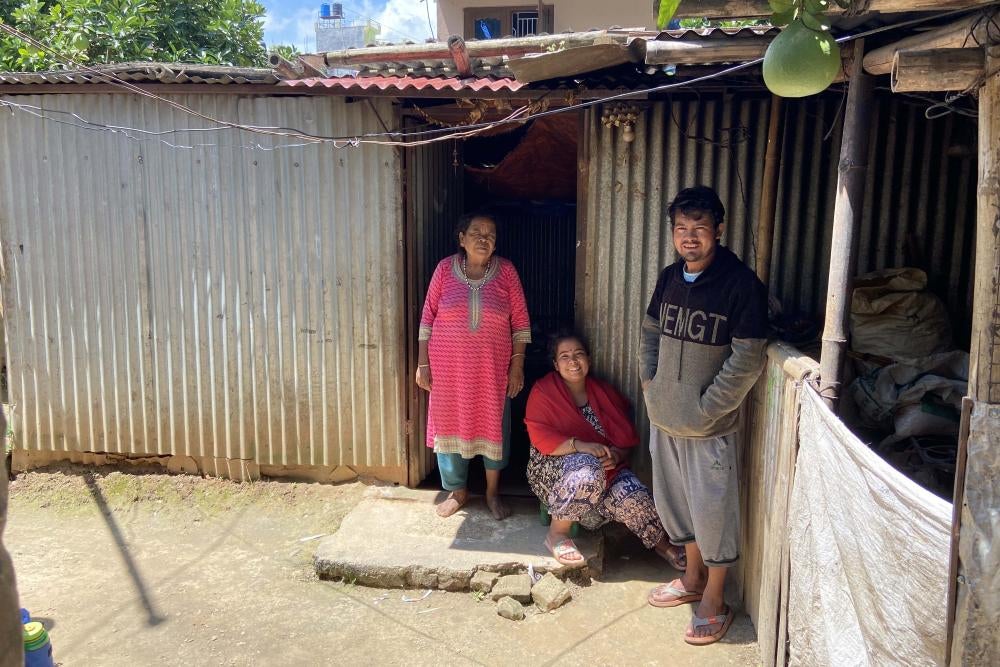
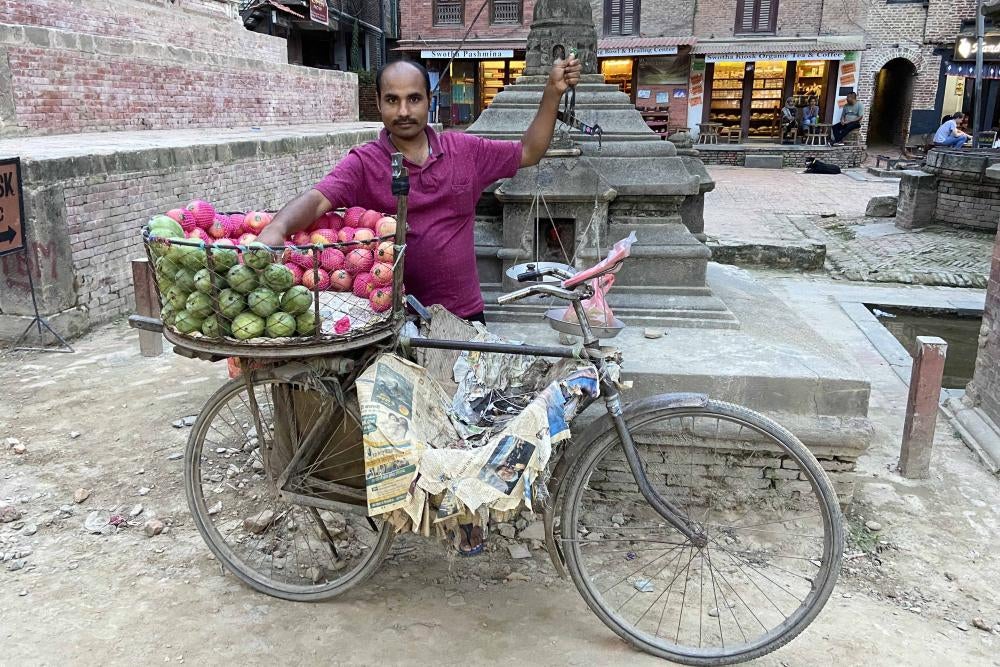
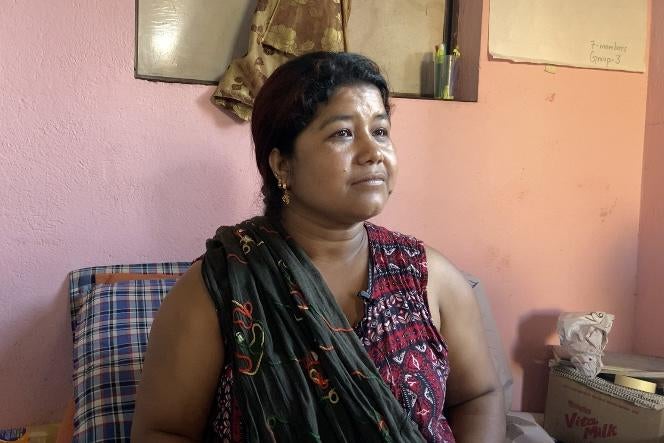
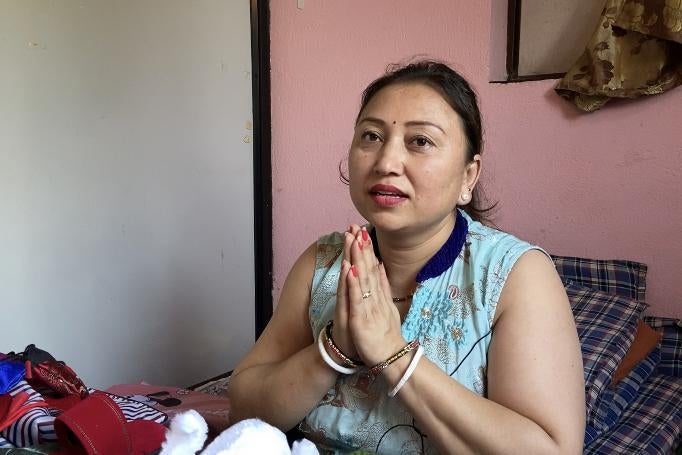
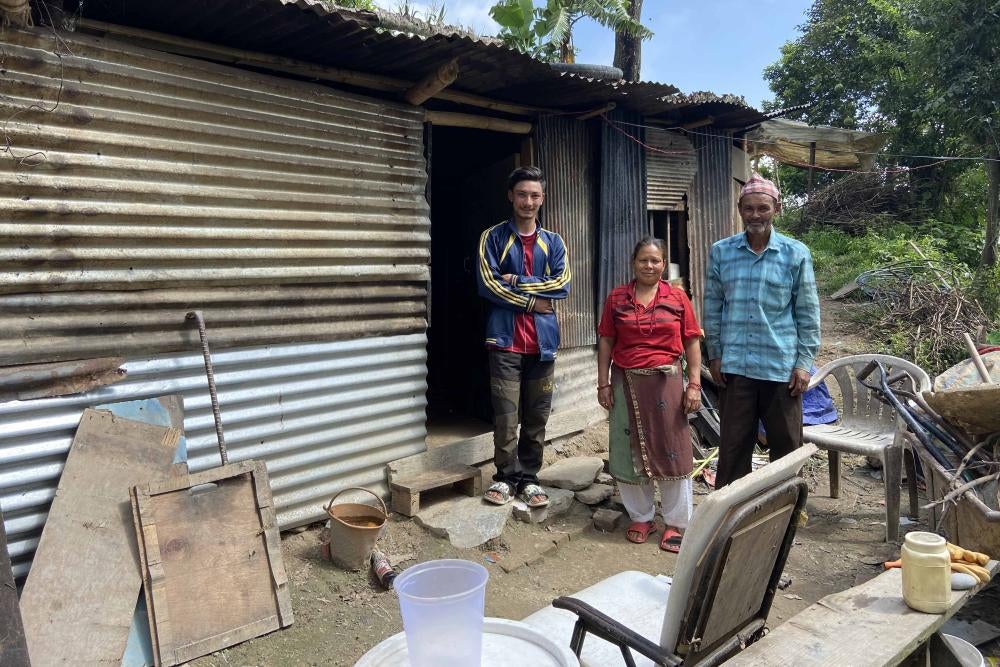
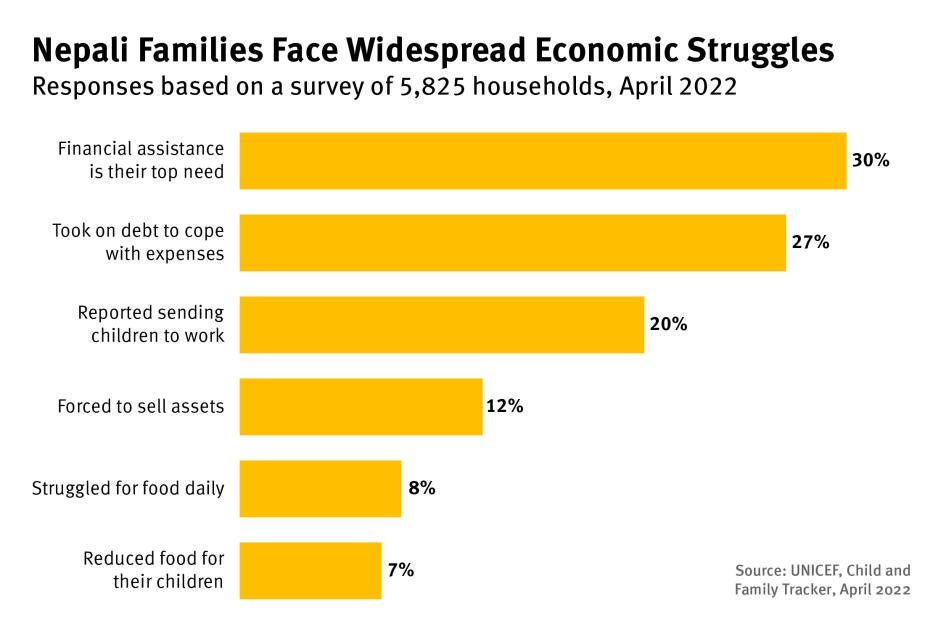
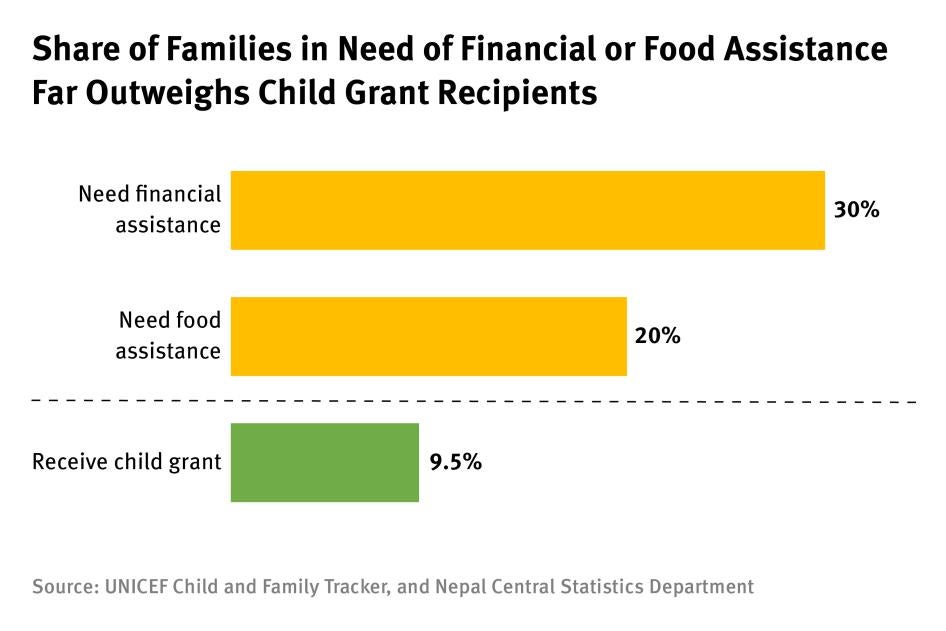








Add new comment